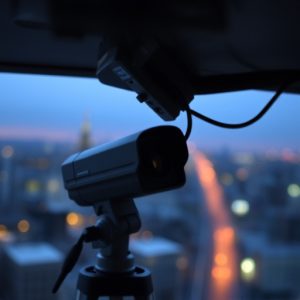Home Security: Uncovering Hidden Microphones & Cameras
In today's digital era, protecting home privacy from audio surveillance is paramount. Concealed…….
In today's digital era, protecting home privacy from audio surveillance is paramount. Concealed Cameras for Front Doors offer an effective solution by detecting and locating hidden microphones and cameras, enhancing security, and ensuring private conversations. These integrated systems protect against unauthorized monitoring of visitors and delivery personnel. Using a combination of traditional visual inspections and modern audio-based detection systems, homeowners can sweep for bugs and fortify their front door security. However, navigating legal and ethical considerations, including consent, recording areas, data protection, and transparency, is crucial when installing and using these devices to ensure responsible monitoring without infringing privacy rights.
In today’s digital age, ensuring home security has become paramount. One emerging threat is microphone bug sweeping, where concealed cameras and listening devices can compromise privacy. This article delves into the critical aspect of home security by exploring advanced detection techniques for both visual and audio-based concealed cameras. We’ll uncover cutting-edge tools, discuss legal implications, and emphasize ethical considerations surrounding bug sweeping, with a focus on identifying hidden threats like those targeting your front door.
- Understanding Microphone Bug Sweeping and Its Importance in Home Security
- Detecting Concealed Cameras: Visual vs. Audio Techniques
- Advanced Tools and Technologies for Bug sweeping at Home
- Legal Considerations and Ethical Use of Bug Sweeping Devices
Understanding Microphone Bug Sweeping and Its Importance in Home Security
Microphone bug sweeping, also known as audio surveillance or listening devices detection, is a critical component of home security in today’s digital age. With advanced technology making it easier for unauthorized individuals to install hidden cameras and microphones, homeowners need to be proactive about protecting their privacy. One effective method to counter this growing concern is by employing concealed cameras for front door monitoring.
These tiny yet powerful devices are designed to detect and locate any audio surveillance equipment within a home’s range. By integrating such technology into your front door setup, you create an additional layer of security, ensuring that visitors and delivery personnel are not secretly monitored. This proactive approach allows homeowners to rest assured that their conversations remain private and that their homes are protected from potential threats lurking in the shadows.
Detecting Concealed Cameras: Visual vs. Audio Techniques
Detecting concealed cameras, especially those aimed at your front door, requires a blend of visual and audio techniques. Traditional methods often rely on meticulous visual inspections, where security professionals use specialized tools to scan for any signs of hidden devices. This involves checking corners, crevices, and surfaces for small lenses or unusual markings.
However, modern tech is transforming this process. Audio-based detection systems have emerged as powerful tools, leveraging microphones to pick up on the faint sounds that a camera’s motor might produce during operation. These innovative methods complement visual searches, ensuring a more comprehensive bug sweeping process for your front door security.
Advanced Tools and Technologies for Bug sweeping at Home
In today’s digital era, advanced tools and technologies have transformed home security, making bug sweeping more effective than ever before. One innovative solution is the use of concealed cameras for front doors, providing homeowners with real-time video feeds and alerts to potential threats. These tiny yet powerful devices can be easily integrated into existing door hardware, offering a discrete yet comprehensive surveillance system.
With motion sensors, high-definition resolution, and night vision capabilities, these cameras ensure that every visitor is captured clearly, day or night. Homeowners can remotely monitor their doorstep through smartphone apps, receiving instant notifications when someone arrives, even if they’re not at home. This technology empowers individuals to maintain a safer living environment while adding an extra layer of protection against unwelcome guests and potential security breaches.
Legal Considerations and Ethical Use of Bug Sweeping Devices
When employing bug sweeping devices, whether it’s for personal or professional purposes, it’s imperative to navigate a landscape of legal considerations and ethical guidelines. The use of concealed cameras, such as those designed for front door surveillance, raises privacy concerns that must be addressed responsibly. In many jurisdictions, there are stringent regulations governing the installation and operation of monitoring equipment, particularly in residential settings.
For instance, laws may dictate the required consent from residents and the specific areas where recording can take place. Ethical use demands transparency—informing individuals about the presence of cameras and the purpose they serve. Additionally, data protection plays a pivotal role; ensuring that any recorded information is securely stored and accessed only by authorized parties is essential to maintaining trust and adhering to privacy standards, especially when dealing with sensitive personal spaces like homes.
Microphone bug sweeping has established itself as a vital component in enhancing home security. By understanding the techniques to detect concealed cameras, utilizing advanced tools, and navigating legal boundaries responsibly, homeowners can take proactive measures to safeguard their privacy. While it’s crucial to be aware of these methods, remember that ethical use is key, ensuring peace of mind without infringing on others’ rights. In today’s digital age, staying informed about bug sweeping practices empowers individuals to protect their homes effectively, especially when considering the potential presence of hidden cameras near entrances like front doors.


